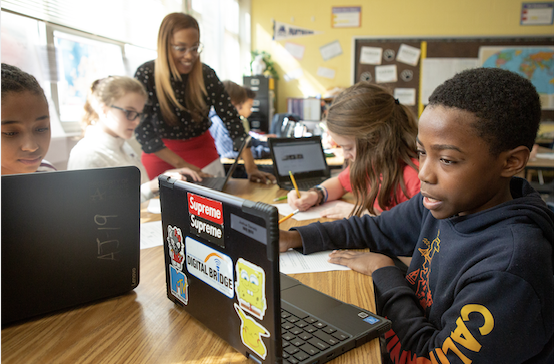Covid-19 is not the first, the second, or even the third infectious disease to emerge during the 21st century. And it is unlikely to be the last. Since 1985 alone, 35 new infectious diseases have emerged worldwide. In the past 20 years, we have experienced SARS-COV, MERS, Ebola, bird influenza, H1N1, and SARS-COV-2. The trends fueling the arrival of these infectious diseases will only intensify.
As a result, the Biden Administration should use a portion of the $123 billion in funding for K-12 public schools in the American Rescue Plan to ensure that the next outbreak does not destabilize our education system as Covid-19 did.
A 2020 UNESCO Report demonstrated that pandemics are becoming more frequent because ecological disruption is altering the ways in which people, domesticated animals, and wild animals interact. These changes significantly increase the risk that outbreaks of zoonotic diseases—those that originate in animals—will escalate into epidemics or pandemics. According to the Ecohealth Alliance, zoonotic diseases make up a significant majority of diseases currently circulating.
Changes in global travel patterns, human food consumption habits and environmental factors including climate change have all contributed to the trajectories of these diseases; once people return to “normal” pre-pandemic behavior patterns, new diseases are likely to surge once more.
In response, every state department of education and school district should take the following actions to future-proof schools against outbreaks:
- Assemble a team of educators and public health officials to undertake a qualitative and quantitative review of actions taken during each phase of response to Covid-19. This review should provide a means of identifying and documenting accomplishments, challenges, and lessons learned.
- Share the findings publicly with stakeholders to ensure they capture their lived experiences. These findings should be specific and directive, encouraging action-oriented steps for improvement.
- Immediately address challenges—such as technology, procurement, communications, human capital—that surfaced during the response to Covid-19 to ensure that the organization is better prepared to respond to future outbreaks.
- Update pandemic-response plans based on what worked well, what worked less well, and the reasons why.
- Test the updated pandemic-response plan based on multiple public health scenarios. One example: an influenza outbreak limited to a single school building, a coronavirus epidemic that necessitates mitigation measures but allows schools to remain open, or a pandemic influenza that forces schools to shift their operating status away from full-time, in-person instruction.
- Engage the local community in a conversation about the pros and cons of investments that will support long-term preparedness including investing in a school-based health surveillance system that alerts public health officials to a classroom outbreak might come at the expense of a short-term need.
These conversations and the decisions that follow will not be easy, but the cost of ignoring this work will be substantial.
Mario Ramirez is an emergency medicine physician, managing director of Opportunity Labs, and a FutureEd senior fellow. Andrew Buher is the founder of Opportunity Labs, a former chief operating officer of the New York City Department of Education, and a FutureEd senior fellow.


